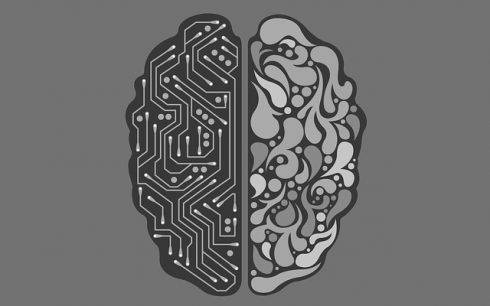
Machine learning has been a buzzword in recent years, but surprisingly some of the most tech-savvy individuals — IT professionals — have been slow to maximize the technology. A recent survey of IT pros shows that this group cannot wait much longer to commit to machine learning analytics. As organizations’ infrastructures have become more complex with the the proliferation of virtual environments, IT teams are inundated with technology and end up wasting time and resources monitoring these tools. Seventy-eight percent of survey respondents stated that they are using multiple tools to identify the root cause of application performance issues in VMware. For many IT teams, solving application performance issues means bringing the full team together to compare these tools and their diagnostic results, leading to a “war room” style debate. This approach can often lead to extensive rework down the line, and only 20 percent of IT workers truly believe their strategies to resolve application performance issues in VMware are 100 percent accurate.
Beyond being inundated by tools and alerts, modern IT teams are expected to run lean while also keeping the organization up to date with the latest technology. To stay up to speed, IT needs to shift focus from being reactive firefighters, and prove they are a proactive, strategic center of the business. Instead of relying on educated guesses to solve application performance problems, IT is seeking precision. This is where machine learning analytics tools can make a huge difference in driving efficiencies and helping the organization run faster and smarter.
RELATED CONTENT: Why automated AIOps is better than AIOps
Introducing AIOps
IT systems generate enough data to power machine learning analytics for their organizations, however IT is still lagging behind in fully using it to drive their own performance. To understand how machine learning analytics in virtual environments can fuel IT and understands patterns of behavior, a new field has emerged, AIOps. Gartner estimates that currently, only five percent of businesses have an AIOps platform in place, however in the next two years that number is expected to grow to 25 percent. Using advanced analytics, AIOps analyzes interactions within an organization’s VMware environment to identify patterns of behavior. AIOps platforms use this data to understand how environments behave over time, so that IT can better understand, identify and resolve issues in their virtual environment.
AIOps in the real world
What’s unique about AIOps is its ability to be applied across organizations of various sizes and industries. Unlike some newer technologies that have emerged, AIOps can be leveraged by small- and mid-sized companies just as well as it can by large enterprises. IT teams can transform their operations, break down silos and end the “war room” approach to resolving application performance issues through the integration of AIOps platforms.
For Jordan’s Furniture, a leading Massachusetts-based furniture brand with thousands of employees, bringing innovation to its IT team was a necessity. The retailer — which has locations throughout New England — is known for its innovation with each store offering unique experiences, such as IMAX 3D Theaters, Liquid Fireworks and Motion Odyssey Movement (MOM) rides. Jordan’s IT department continuously improves its infrastructure to keep its business operations running efficiently and cost-effectively. To deliver the level of service they have come to be known for, Jordan’s IT leaders know that being operational in IT isn’t enough – they need fast, reliable and optimized IT operations.
With this in mind, the Jordan’s Furniture IT department implemented AIOps to help them be more proactive in managing their VMware environment. Using machine learning technology, the Jordan’s Furniture IT team was able to immediately find out where there were potential problems in their infrastructure and resolve them before they became an issue. WIth real-time analysis of its infrastructure, the team could understand and make recommendations to reconfigure their environment and eliminate latencies. Not only did leveraging machine learning analytics and AIOps drive organization-wide performance, but the tool helped optimize storage resources and identify unnecessary waste — a fast and easy way to proactively save on time and resources. The data revealed by their AIOps platform led the team to a complete reorganization of their VM environment, making their data stores smaller and more efficient, which affects every area of their business.
For a smaller organization like AllSouth Federal Credit Union, a financial cooperative with 23 locations in South Carolina, ensuring application performance is critical to delivering timely support to its 115,000 members. The credit union relies on a business-critical banking application running on a cloud-based Windows Server hosted in their VMware environment. To manage this environment, AllSouth’s IT team was using a wide variety of traditional analytics tools but didn’t have a clear view into the behavior of interrelated objects (e.g., application, network, storage, infrastructure). To maintain their high performance requirements, they knew they needed to use a different approach in order to see the root cause of performance issues.
After implementing an AIOps platform, AllSouth was able to address a variety of issues and gain a holistic view of their entire virtual environment. Now, when an issue arises, AllSouth’s IT team can instantaneously connect the issue to the source in the infrastructure and receive specific recommendations to resolve it. The IT team can now work faster, knowing there isn’t a need to rework and use trial-and-error processes traditionally used with other monitoring tools. AIOps has also provided benefits by way of communication between management, other departments and outside vendors, as it can validate sources of performance issues and calculate potential cost savings.
For IT teams that are operating business-critical applications in virtual environments, AIOps platforms have the power to shift IT operations from a reactive to a proactive state. Having a view into the entire virtual infrastructure and technology that learns patterns of behavior over time will allow IT teams to run more efficiently and ultimately keep the entire organization productive and up to speed.








